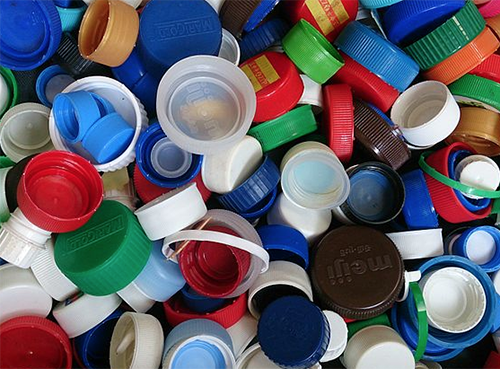All Materials
Rubber & Elastomers
Rubber & Elastomers
Articles sold as synthetic rubber, elastomers, or synthetic rubbers are materials with rubber-like properties (tacky and highly elastic, tear- and abrasion-resistant). Most rubbers (other than those labeled as "natural rubber") are petrochemical-based polymers. Synthetic rubber products used in food processing often contain a variety of fillers and other additives (carbon black, plasticizers, waxes, oils, etc.) that may pose concerns for human health. Plasticizers, including phthalates, used to improve flexibility in rubber-based articles can migrate into food products [1]. Food contact elastomers can also be a source of aluminum and heavy metal contamination in food products [2].
Material Preference
Preferred rubbers will have some or all of the following characteristics:
- In most food contact applications where rubber-like qualities are desired, silicones are preferred unless a linear low-density polyethylene material is available that meets the same performance specifications.
- Elastomers should be selected based on suitability for the food substance and operating parameters (heat, temperature fluctuation, pH) [2].
- Food contact surfaces are properly maintained to reduce migration risk.
- Additives are evaluated for food contact safety
Commonly used synthetic rubbers include:
Silicone Rubber is very long lasting compared to other rubbers. It is preferred for being less prone to cracking and for its heat tolerance compared to other elastomers. Additives, chemicals introduced in the polymerization and vulcanization processes, as well as silicone precursors (including silicone oligomers and low-molecular weight siloxanes) may migrate from silicone into food. Siloxanes are known to migrate at higher rates into high-fat content foods and under conditions of high heat [3].
EPDM (ethylene propylene diene monomer rubber) is used in food contact applications requiring resistance to high heat and/or steam.
Nitrile (AKA nitrile butadiene rubber, NBR, Buna-N, and acrylonitrile butadiene rubber) is commonly used in oil-resistant applications. In some users, contact with nitrile products may be linked with contact dermatitis. [4]
Polyurethane (AKA urethane) is used in applications where heat tolerance, oil resistance, tear resistance are desired. Typical food contact applications include hoses/tubing, conveyor belts, and in some adhesives.
Polyisoprene is most similar to natural rubber but with higher tensile strength. It is commonly used in baby bottle nipples and hoses/tubing.
SBR (Styrene butadiene) is a used for applications requiring high flexibility, water- and heat-resistance. It is found in hoses and tubing.
References
[1] Strategies, P. (2018). Sources of Phthalates in Dairy Farm Equipment. Prepared for Environmental Health Strategy Center and Coalition for Safer Food Processing and Packaging, with Screening and Testing by Ecology Center. Full report.
[2] Kühne, F., Biedermann, M., Eicher, A., Felder, F., Sander, S., Schmidt, R., Lehmann, S., McCombie, G., Merkel, S., Kappenstein, O., & Luch, A. (2021). Characterisation of elastomers as food contact materials–part 1: Quantification of extractable compounds, swelling of elastomers in food simulants and release of elements. Molecules, 26(2). https://doi.org/10.3390/molecules26020509
[3] Geueke, B. (2015). Dossier - Silicones. Food Packaging Forum. Full text.
[4] Olson, L., Miller, G. Z., & Belliveau, M. (2019). Taking off the Toxic Gloves: An Investigation of Phthalates and Other Chemicals of Concern in Food-Handling Gloves. Full report.
See full list of resources here.
Information last updated: 10/28/2021


